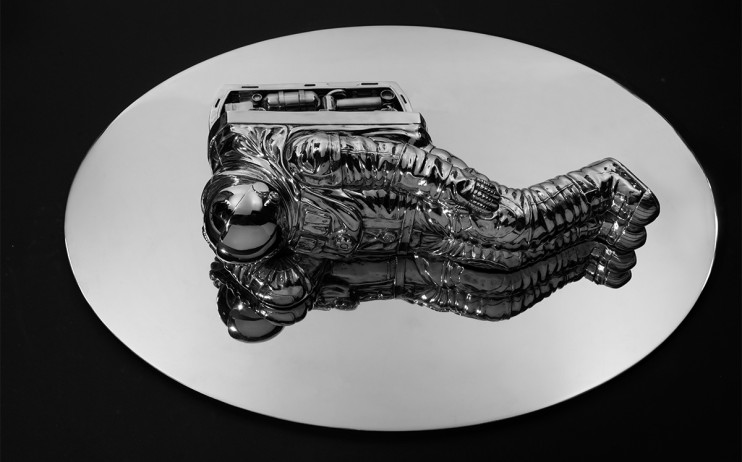2020大內藝術節-Light ON/OFF:記憶的消逝與開啟
- 十月 01, 2020
- 展覽
展期:2020.10.03 Sat.-2020.11.01 Sun.
Duration:2020.10.03 Sat.-2020.11.01 Sun.
開幕:2020.10.03 Sat.
Opening:2020.10.03 Sat. 3pm
地點:尊彩藝術中心
Venue:Liang Gallery 1F
策展人:曾鈺涓
Curator:TSENG Yu-Chuan
藝術家:陳建北、黃心健xLaurie Anderson、魏澤、廖祈羽、豆宜臻x簡翊晉
Artists:CHEN Chien-Pei, HUANG Hsin-Chien, Laurie ANDERSON, WEI Zei, LIAO Chi-Yu, hewen tawtawazay, CHIEN Yi-Ching
創立於2014年的大內藝術節已連續舉辦七年,由大內藝術特區各畫廊機構共同組織、籌辦。2020大內藝術節「Light ON/OFF」,由策展人曾鈺涓策劃藝術特區三大主展場,分別為:大觀藝術空間、尊彩藝術中心、秋刀魚藝術中心。
尊彩藝術中心以「記憶的消逝與開啟」討論子題,邀請五位/組新媒體藝術家之精彩作品進行對話。以錄像、裝置創作展現探討主題。
光是人類崇拜的對象,是世界的生命與靈魂,也是自然的主宰;在有光的地方,不再懼怕黑暗;光是數世紀以來,藝術家所追尋的想像,對光的描繪,以光感創作的影像,以光建構的建築中的崇高感,以光作為媒介記錄與看見影像,以光紀錄軌跡與影像,再現與塑造的世界。類比訊號時代,以光為媒材,「光」是主題表現的載體。
數位科技以「光」為介面,進行訊息的傳遞,透過編碼、傳遞、接收與解譯,更超越電子時代的類比「光」。類比訊號的「光」,電視開啟後,影像展現,電視關閉,影像消失;燈光開啟後,光照亮空間創造氛圍,呈現出魔幻沈浸感,此種類比訊號的裝置,關閉後,其所創造的景觀世界在人們眼前消失,然而,數位訊號透過裝置介面所呈現的光,展現的光,所開啟的世界,在裝置關閉之後,從真實世界中的人們眼前中消失,卻仍留存在虛擬世界的訊號當中,繼續成為世界的一部份。
「記憶是人們生命經驗的核心,被儲存於記憶庫之中,凍結於塵封,需要時,記憶會被浮現於我們腦中,然而此種記憶是否為真,佛洛伊德認為記憶就像是「手寫板」,結合意識和無意識兩種功能,是可以書寫、再寫、改寫、覆蓋、蹤跡等。數位時代,人們將生活紀錄於社群平台,網路相簿,成為不可抹去的記憶,卻也在數位書寫的過程中,思考建構記憶的策略。
Established in 2014, Taipei Art District Festival has been running annual events for seven years. It is held and executed by member galleries and organizations.
Taipei Art District Festival 2020 invites TSENG Yu-Chuan as the curator of this year’s themed exhibitions at DaGuan Gallery, Liang Gallery and Fish Art Center around the theme of “Light ON/OFF.” As one of the main exhibition venues with the subtitle “Disappearance and Formation of Memory”, Liang Gallery invites artworks from five groups of new media artists to explore the topic via videos and installation arts.
Humans worship light, which is the source of life and soul in this world as well as the sustaining force in nature. When there is light, there is no fear of darkness. For centuries, light has been the subject of artists’ quest. They depict light, utilize light sensitivity to create images, employ light to construct the feeling of sublime in architecture, use light as a medium to record and develop images, and document trajectories and images to represent and shape the world. In the age of analogous signals, light becomes a medium, a vehicle for expressing all subject matter.
Digital technology has its interface based on “light” to communicate signals, surpassing the analogous “light” of the electronic age with the encoding, transmission, reception and decoding of signals. The “light” of analogous signals shows images after a television is turned on; and when the television is turned off, the images cease to exist. When the light is switched on, a space can be lit up and an atmosphere created, producing a magical sense of immersion. Devices using analogous signals offer spectacles that disappear after the light is switched off. However, the light emitting from the interface of devices using digital signals opens up different worlds that remain in the virtual world, continuing being a part of the world even after their disappearance from the real world and in front of people’s eyes after the devices are turned off.
Memory is central to human life experience. It is stored and shelved in the memory vault, and can be retrieved when needed. However, the authenticity of memory is always a question. Freud compares memory to a “mystic writing pad,” which bridges the consciousness and the unconscious, something that can be written, rewritten, revised, overridden and traced. In the digital age, people record their lives through social media platforms, permanently storing memories with online photo albums while formulating strategies to construct memories through digital writing.






